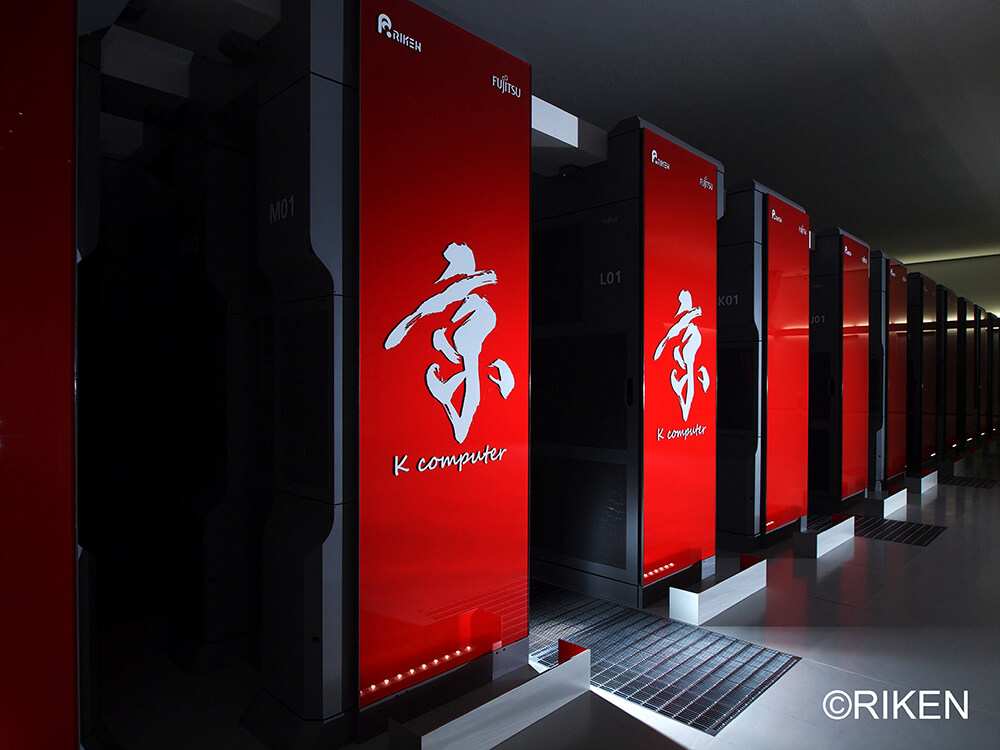
RIKEN (President Hiroshi Matsumoto) has donated a panel and a system board of the supercomputer "K computer," which was installed and operated at the Research Center for Computational Science in Chuo Ward, Kobe City, and a nameplate of "K Computer Mae Station" on the Kobe New Transit Port Island Line, the nearest station to the Center, to the KCG Museum, where the equipment used by Kyoto Computer Gakuin (KCG) since its foundation in 1963 is preserved and displayed.They are expected to arrive by the end of October 2021, and KCG will promptly consider ways to preserve and display them.The K computer was active in a wide range of fields, including being ranked number one in the world for its computational speed, before shutting down on August 30, 2019 and handing over its role to Fugaku.
The K computer was jointly developed by RIKEN and Fujitsu Limited under the "Innovative High Performance Computing Infrastructure (HPCI)" project promoted by the Ministry of Education, Culture, Sports, Science and Technology (MEXT) to become the fastest supercomputer in the world, and was completed in June 2012 and started its shared use in September of the same year.The development cost is said to have been about 110 billion yen, which was spent by the government.The name comes from its ability to perform 1 K computer calculation per second (K computer is 10,000 times 1 trillion).In terms of processing capacity, we were always at the top level in the world and competed with other countries.More than 10,000 researchers in total have utilized the system for research and development in a wide range of fields, including medicine, manufacturing, disaster prevention and mitigation, and space.K computer-mae station" became the name of the station in July 2011, before the "K" was installed, and has been well known (in June 2021, with the retirement of the "K", the station will be renamed "Computational Science Center Station").
The "Kyo" panel to be donated to the KCG Museum is made of glass with the "Kyo" logo in white on a dark red background, 80 cm wide and 229.5 cm high, weighing approximately 70 kg. The system board is approximately 60 cm square and weighs approximately 14 kg, consisting of four CPUs, memory, and copper pipes through which cold water flows to cool the CPUs.RIKEN publicly solicited applications for the donation, and the KCG Archives was selected as the recipient.The nameplate of "Kyocomputer-mae Station" will be donated by Kobe City, which operates the Kobe New Transit Port Island Line.
In 2009, the KCG Museum was recognized by the Information Processing Society of Japan as the nation's first "Distributed Computer Museum" because it is "one of the best facilities in Japan that preserves a large number of valuable equipment.So far, seven models have been certified as "Information Technology Heritage" and are on display at KCG Kyoto Ekimae School.The "K computer" that made Japan's high technology known to the world and the "K computer station" that symbolized it, both of which are close in name to our institute, will be the new centerpiece of the KCG Museum and will further enhance the significance of its existence as a computer museum.